The Samsung Galaxy S6 and S6 edge Review
by Joshua Ho on April 17, 2015 9:00 AM EST- Posted in
- Smartphones
- Samsung
- Mobile
- Galaxy S6
- Galaxy S6 Edge
Display
As we briefly discussed in our look at the specifications, the Galaxy S6 line introduces a newer generation of AMOLED displays, which is said to increase maximum luminance to 600 nits. Samsung claims that this was achieved with the use of new materials, which is likely necessary in order to sustain power efficiency improvements. It doesn't seem that AMOLED is uniquely suited to high resolution, but rather that Samsung Display Corp. is managing to dramatically improve how they make AMOLED displays with every year that offset power consumption increases from higher resolution displays.
To find out how Samsung did, we use SpectraCal's CalMAN 5 Ultimate, in addition to X-Rite's i1Pro2 Basic to characterize displays as accurately as possible.
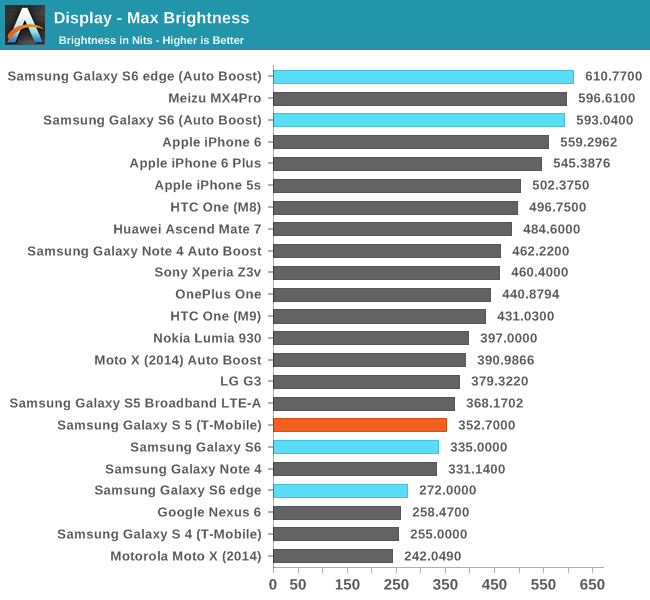
From the results Samsung's claims of a 600 nit display are valid in this case, which is a 100% APL white display. It's important to note that achieving this requires the use of auto-brightness, and that manual brightness is limited to a much lower brightness to reduce power usage, here the S6 sees similar maximum brightness as the S5. The S6 edge disappointingly only achieves 272 nits in this mode, a rather low value. I saw color balance shift dramatically in auto-boost mode, which suggests that this operating mode is likely less efficient than manual brightness. As an explanation, we've seen that colors are controlled in AMOLED by voltage while brightness is controlled by PWM (pulse width modulation). As with most recent AMOLED displays, there's no DC bias to the pixels so the contrast really is infinite instead of just a very large number when displaying black.
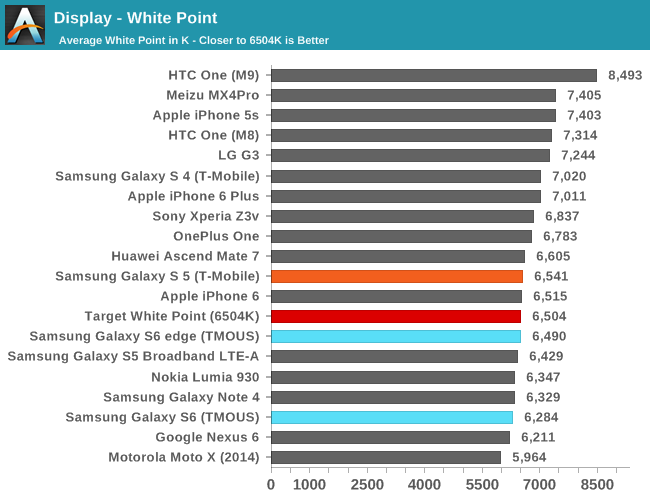

Moving on to grayscale, we can see that Samsung has done a pretty good job of controlling the white point and gamma across the saturation sweep, even if green is slightly dominant in both displays. We can also see that there is variation across displays as the S6 edge is closer to neutral while the S6 sample tends a bit warmer.
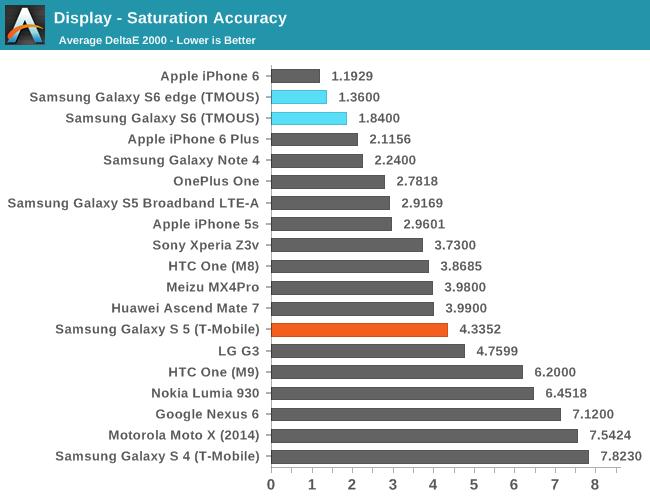
In the saturation sweep, both displays do an incredible job. I really don't have anything else to say here, because there's really no way to improve on the level of calibration Samsung has done on this display. Unless Samsung calibrates every single display in production, which is wildly impractical and effectively impossible to do, this is as good as it gets for a mass-produced device. Improving past this point will also be incredibly difficult to perceive, which means there's no real reason to go any further.
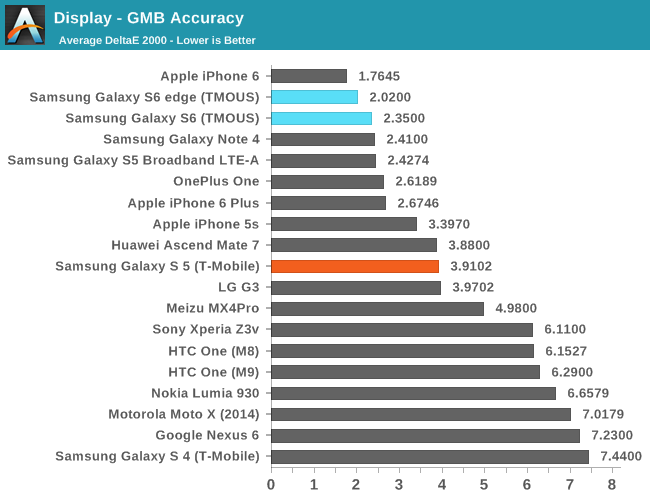
In the Gretag MacBeth ColorChecker, we can get an idea for overall color accuracy, which paints a picture similar to the saturation test. The only real problem I've noticed with these displays are the viewing angles, which can produce color shifting when the display is tilted. This is a bit of an issue on the edge variant as I can see that the edges of the display appear somewhat green when viewed head on, but otherwise there are no real issues to be seen here.
Overall, from a color standpoint it’s looking like Samsung has made one of the best displays available on the market today. Color accuracy is at the point where it’s pretty safe to say that the calibration doesn’t have clear color errors, and the peak brightness of the display is incredibly high. The 1440p resolution helps to compensate for the PenTile subpixel layout so in practice it’s effectively impossible to make out any pixels or the subpixel pattern. The contrast remains infinite as with most modern AMOLED displays, and overall it’s really hard to find any issue with the Galaxy S6’s display at first.
However while the S6 edge seems to be without any issues, the S6 does have some odd display issues that can be seen in direct sunlight as seen in the photo above. To be clear about this the photo above is a simple white screen, which should make the image completely homogeneous but instead there are two visible vertical lines and another jagged horizontal line that appear across the display. Inspection under a light microscope doesn’t really reveal what’s causing this, but the defect is quite visible in practice as seen in the photo above. I suspect that defects are rare, and in any condition other than direct sunlight I can’t see this visual problem.
While trying to see what this kind of defect looked like under a microscope, I also went ahead and took some photos of the subpixel pattern. As far as I can tell, it looks like the green subpixels have a bit more variance than what we’re used to as they tend towards oblong shapes rather than circles, which is likely due to the much tighter pixel density. It seems that this variance may cause some color shifting in certain units, which seems to remain a potential problem with Samsung's AMOLED displays. The pixel fill factor still remains surprisingly low when compared to LCDs, which usually have much higher active area. Due to the subpixel arrangement and some other differences in the display design, color shifting also remains higher than one would expect from LCD displays that are found in phones like the iPhone 6.
The final test that I managed to run on the Galaxy S6 is the brightness vs APL test, which shows the advantage of AMOLED’s emissive nature as it can dynamically increase brightness if the entire display isn’t showing a white screen. As a result, this means that in low APL scenarios like dark movie scenes and app themes it’s possible to see a maximum brightness closer to 700 nits or higher. However, in practice the display’s practical brightness is closer to 600 nits.
Overall, the display is still one of the best on the market, but I would be a bit concerned about fill factor for VR applications as that was a problem on the Note 4. Issues like purple smearing have been resolved, but there are still some problems with the display such as color shifting with changes to viewing angles and some variability in display quality from unit to unit. With this generation I suspect Samsung is either meeting or exceeding the best LCDs in quality, and with the next generation of AMOLED it’s likely that high end smartphones will have to migrate to AMOLED to remain competitive.



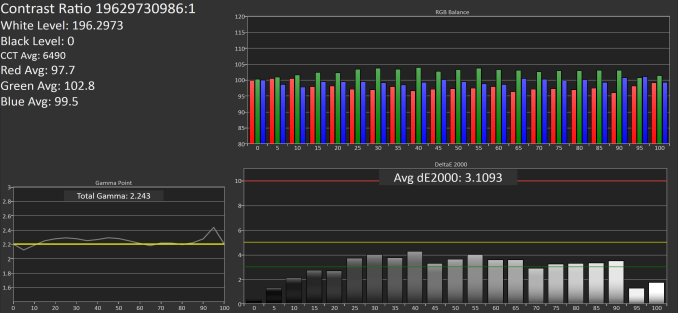
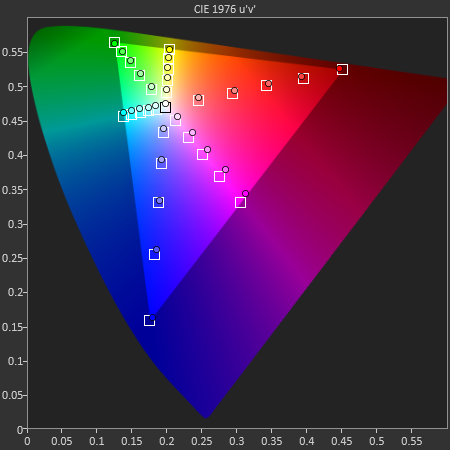
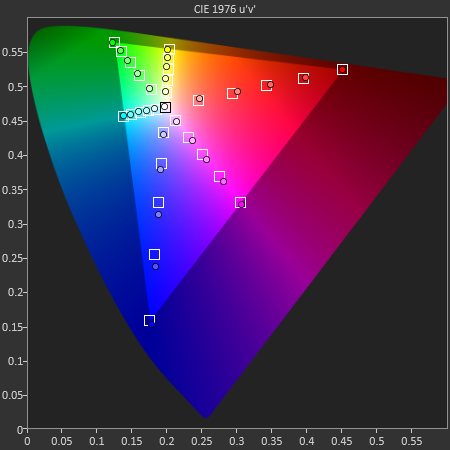
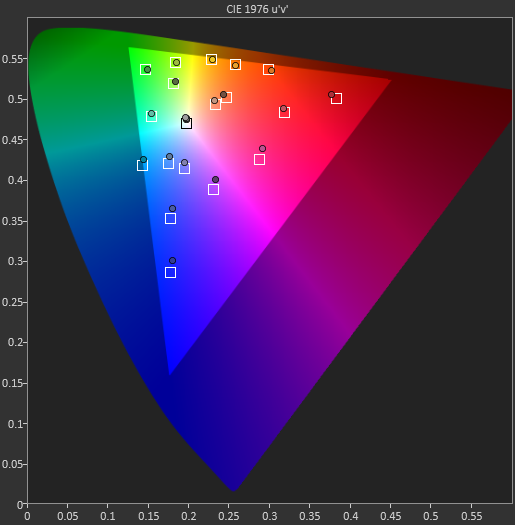

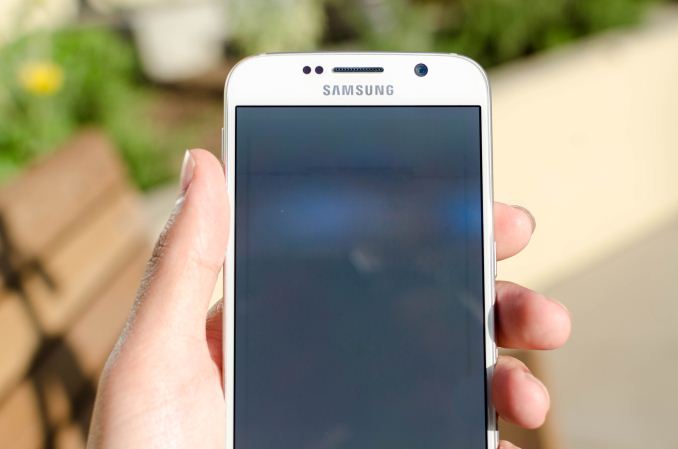
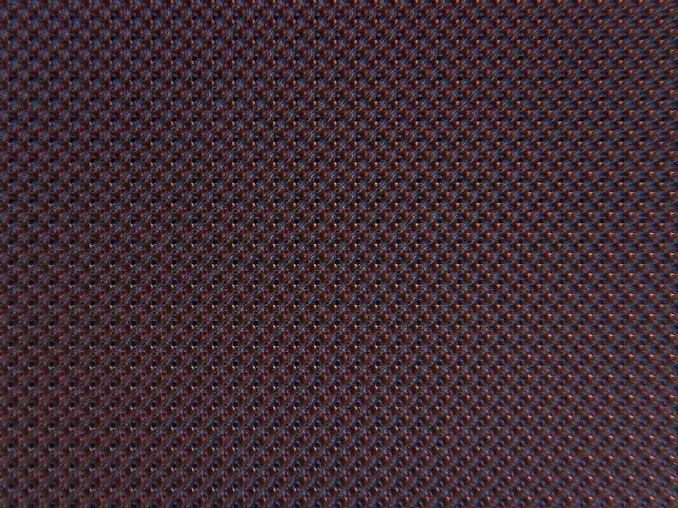
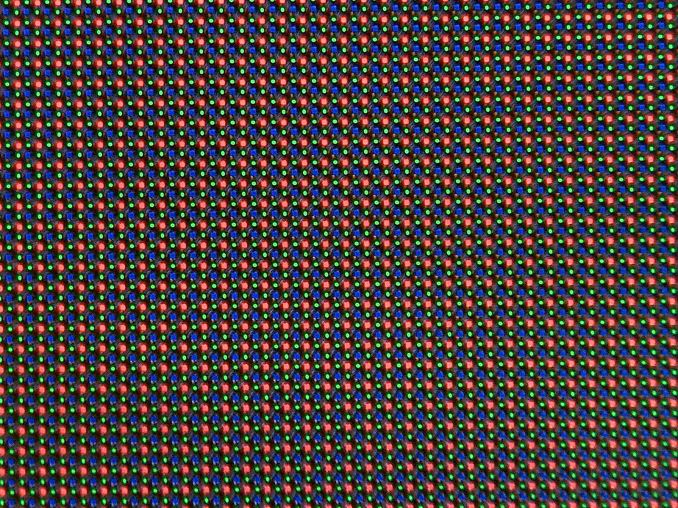
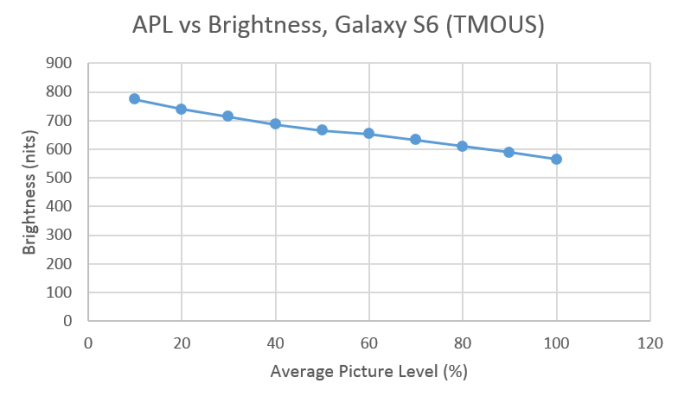








306 Comments
View All Comments
CrazyElf - Friday, April 17, 2015 - link
I just hope the Note 5 comes with expandable storage and a removable battery.Equally annoying is that it as lost waterproofing. On paper at least, it should be easier to waterproof a phone with no removable battery. That and accidents happen. The glass back too is form over function. Give us a metal back or something like carbon fibre.
whiteiphoneproblems - Friday, April 17, 2015 - link
Playing with the Edge, I noticed that the curves of its screen create undesirable light reflections. Any comments on this?JoshHo - Friday, April 17, 2015 - link
I noticed interference effects as well, which is discussed in the display section. Overall there are some notable compromises with the edge with relatively little benefit. Combined with the steep price increase and I find it hard to justify buying one over a 64 GB GS6.whiteiphoneproblems - Saturday, April 18, 2015 - link
Thanks - sorry to make you repeat yourself.nyonya - Friday, April 17, 2015 - link
Great review! Any chance you guys will get a Verizon or Sprint variant? Would love to see the battery life tests with the Qualcomm modem in those.victorson - Friday, April 17, 2015 - link
Nothing about the front facing camera?Ammaross - Friday, April 17, 2015 - link
It's a selfy-cam. Don't like it? Take pictures in the bathroom mirror like the rest of them. I doubt Skype et al pixelated video chat will care about slight distortions at the edge of the FoV or slight aliasing for striped objects, etc. :Pjohnnohj - Friday, April 17, 2015 - link
The S5 (and Note 4?) used to have a serious problem with edge distortion on the front-cam. I wonder if it's present on the S6.See this thread for examples http://forums.androidcentral.com/samsung-galaxy-s5...
akdj - Sunday, April 26, 2015 - link
I've got the Note 4, can't comment on the S5. I've never used one. But the Note 4, if so inclined allows you to take 'selfies' with the front (main) camera. You set your phone where you want it (actually according to where you want you;)) -- it looks slick. I've never used it. You frame/focus/lock exposure where you'll be 'posing' yourself or with a group. Take position. It recognizes a face. Flashes a light, counts down a couple seconds and snaps.Regardless, they're using a nice wide aperture and high megapixel selfie cam (that also shoots decent 1080p video for conferencing). It's definitely a step 'up' from most of the competition including the iPhone (I'm ambidextrous, the 6+ is my personal phone. I run our business with the Note4). Note 4's 'selfie' cam definitely beats up on my iPhone's. But then again, FaceTime is extremely cool, more reliable than Skype and convenient that Voice. Be cool if one of the three would open their face 'facing' software as open source/X-Platform, secure and not subsidized by data mining/search dollars or near trillion dollar company servers like Apple's.
More n more fills are using this camera, not necessarily for selfies but conferencing and team meetings. Between the two I've got, while the Note's is a better face cam IMHO, it's slight. And that's for both front and rear. They're both phenomenal in comparison to the 2007 iPhone I owned, the '08 Android, and any iPad or Xoom/Nexus I've owned --- and with a ten year old son, going through Google's Drive photos/Picassa and iCloud, both of which I was using pre 2007 for email and DSLR & visual storage or transfer, I'm now able to watch my son grow up in front of the computer.
So much different than my mom's photo albums of my three younger brothers ( all of us married, with kids now) & I.
These cameras and their storage software/data management subsystems have grown in leaps and bounds in the past couple years ...ita going to be interesting in thirty years to see what my son's 'photo albums' look like. If you were born in the last decade, your entire LIFE will be online and documented photographically
Practice Safe Selfies! I've got stories from friends about watching 'slide shows' with their teenagers or college kids that are hilarious! I'm not so sure they need to improve selfies significantly -- beyond today's capabilities. There's a fine line between too much detail and improved clarity on a wide angle closely focused, and hence distorted facial or grainy 'length' shots. I think nearly all selfie cams suffer not only edge distortion but soft corners/vignette, low resolution, tiny sensors and bad skin tones. They're more than fine for casual web shots but I don't want to see the pores of the race of the person I'm chatting with. Too distracting!
akdj - Sunday, April 26, 2015 - link
Ugh!*Edit* paragraph two is supposed to say 'More folks' not fills.
**Edit 2** last, main sentence '..the (f)ace of the person I'm chatting with!'
J